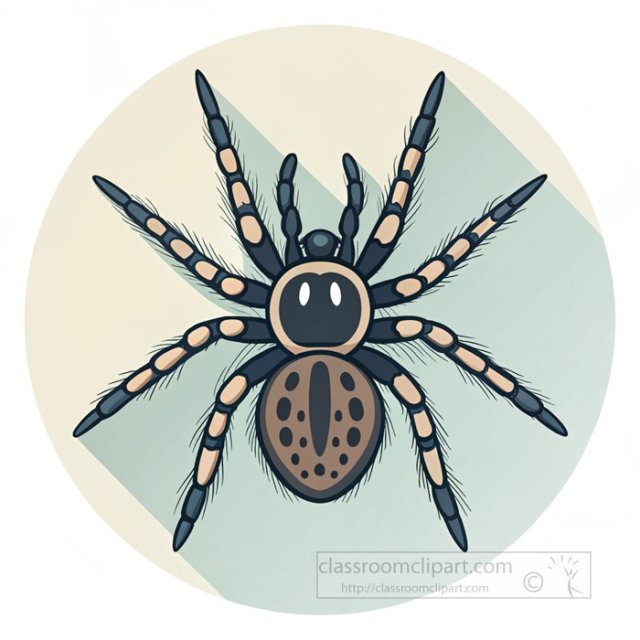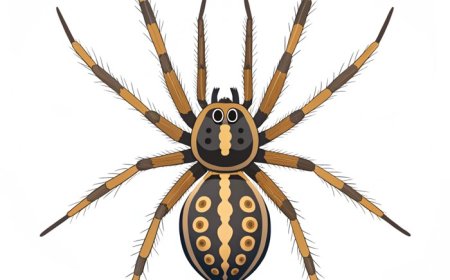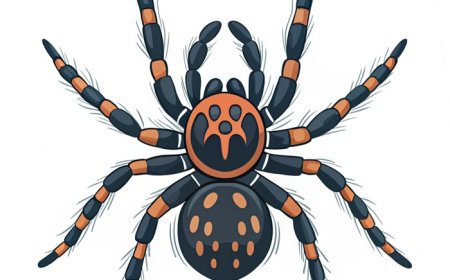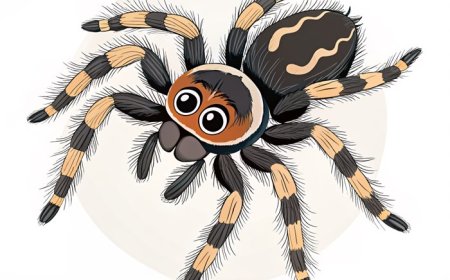Trapdoor Spider Guide: The Hidden Hunters Beneath the Ground
Meet the trapdoor spider—a secretive, burrowing arachnid that hides beneath the ground and leaps out to catch prey. Discover how it builds camouflaged homes and survives without spinning webs

🕷️ Introduction
Trapdoor spiders are fascinating creatures that live underground, waiting patiently for the perfect moment to strike. They don’t build webs like other spiders—instead, they dig burrows in the ground and create camouflaged “trapdoors” out of silk, dirt, and leaves. When an insect walks by, the trapdoor flips open, and the spider pounces like lightning.
Although they may sound scary, trapdoor spiders are harmless to humans. They’re shy, solitary animals that spend most of their lives hiding. These spiders play an important role in nature as stealthy predators that help control insect populations in forests, grasslands, and deserts.
🏠 What Does a Trapdoor Spider Look Like?
Trapdoor spiders are sturdy and compact, usually dark brown or black, with shiny, hard-looking bodies. Most are between 2 and 4 centimeters long, though some species can grow larger. Their bodies are built for digging, with short, powerful legs and strong jaws.
Because they spend most of their time hidden underground, they don’t rely on vision. Their eyes are small, and they use the hairs on their legs to feel vibrations in the soil above their burrow. This helps them detect when prey is near.
🕳️ How Do They Build Trapdoors?
Trapdoor spiders are master burrow builders. They use their fangs and legs to dig a deep hole in soft soil. Then, they line the burrow with silk, which keeps the walls strong and helps them slide smoothly inside. At the entrance, the spider builds a hinged lid—the trapdoor—using silk, soil, and bits of leaves or moss.
This door is carefully camouflaged to match the ground. It lies flat, like a tiny manhole cover, and is nearly impossible to see. From just beneath the door, the spider waits with its front legs touching the underside so it can feel any movement above. When it senses a passing insect, it springs the lid open and grabs the prey in a split second.
🍽️ What Do Trapdoor Spiders Eat?
Trapdoor spiders are ambush predators. They eat insects, beetles, ants, and other small animals that pass near their burrow. Some species can even catch small frogs or other spiders. Because they don’t use webs, they rely on surprise and speed to catch their food.
After capturing their prey, trapdoor spiders drag it into their burrow, where they inject venom and digestive fluids. Then, they slurp up the liquified insides of their meal. It’s a patient but effective way to hunt.
🌍 Where Do They Live?
Trapdoor spiders live in warm, tropical and temperate regions around the world. They are most common in Australia, South Africa, Southeast Asia, and the southern United States. They prefer areas with soft soil where they can dig easily, such as woodlands, rainforests, grasslands, and scrublands.
Because they live underground, trapdoor spiders are rarely seen. But their burrows are often clustered in areas with just the right conditions, making some places home to hundreds of individual spiders living side by side—each in its own private hideout.
🐣 Life Cycle and Behavior
Female trapdoor spiders can live for a surprisingly long time—often 10 to 20 years—while males usually live shorter lives. Males leave their burrows once they reach maturity, wandering in search of a female to mate with. After mating, the female lays eggs inside her burrow and guards them closely until they hatch.
The baby spiders, called spiderlings, stay with their mother for a short time before setting off to dig burrows of their own. Like other spiders, trapdoor spiders grow by molting, shedding their exoskeletons as they get bigger.
🛡️ Are Trapdoor Spiders Dangerous?
Trapdoor spiders may look tough, but they are not dangerous to people. They are shy and rarely bite, and even if they do, their venom is mild and not harmful to humans. Their main defense is hiding—camouflage, stealth, and their burrow keep them safe from predators like birds and lizards.
They are more likely to run or retreat into their burrow than stand their ground. If you're lucky enough to spot a trapdoor spider or its burrow, it’s best to observe from a distance and leave it undisturbed.
🌟 Fun Facts About Trapdoor Spiders
Trapdoor spiders are so well camouflaged that scientists often walk right past their burrows without noticing.
Some species build side tunnels off their main burrow to escape if the trapdoor is disturbed.
Trapdoor spiders don’t spin webs, but their burrows are made almost entirely of silk-lined walls.
Female trapdoor spiders can live in the same burrow for over 20 years!
Their speed and power come from strong muscles and sudden bursts of hydraulic pressure in their legs.
👧 Kid-Friendly Summary
Trapdoor spiders are special spiders that live underground in hidden tunnels. They build trapdoors out of dirt and silk and wait quietly for insects to pass by. Then they jump out and grab their food. They don’t spin webs, and they almost never hurt people. These spiders are shy and helpful hunters that keep bugs under control.
📚 Vocabulary Words
Trapdoor spider – A spider that lives underground and builds a lid to cover its burrow
Burrow – A hole dug in the ground for shelter
Camouflage – Coloring or covering that helps animals hide in their surroundings
Ambush – A surprise attack
Venom – Poison used to catch or defend against prey
Molting – Shedding old skin or exoskeleton to grow
Spiderling – A baby spider
Hinged – Attached in a way that allows something to open and close like a door
❓ Interactive Quiz (8 Questions)
1. What is a trapdoor spider's home called?
A. Web
B. Nest
C. Burrow
D. Shell
2. How does the spider know when prey is near?
A. By smell
B. By sound
C. By vibrations on the trapdoor
D. By light
3. What is the trapdoor made of?
A. Silk only
B. Wood and leaves
C. Dirt, leaves, and silk
D. Rocks and bones
4. What do trapdoor spiders eat?
A. Fruit and seeds
B. Insects and small animals
C. Grass and leaves
D. Worms only
5. How do trapdoor spiders catch their prey?
A. With a web
B. With a net
C. By jumping out from their burrow
D. By flying
6. Are trapdoor spiders dangerous to humans?
A. Yes, very
B. Only when hungry
C. No, they are harmless
D. Only babies are dangerous
7. Where do trapdoor spiders live?
A. Antarctica
B. Underwater
C. Warm places with soft soil
D. Inside caves only
8. What is molting?
A. Hiding underground
B. Changing colors
C. Shedding skin to grow
D. Sleeping in the winter




















































